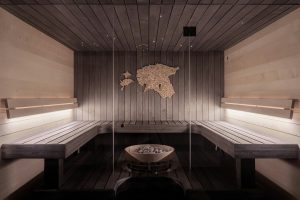The Impact of Green Building Design
Welcome to the world of sustainable architecture! In recent years, there has been a growing trend towards incorporating green building design principles in construction projects. This innovative approach is not only environmentally responsible but also offers significant benefits to building owners, occupants, and the community as a whole. In this article, we will explore the impact of green building design, its benefits, and its potential for revolutionizing the construction industry.
The Concept of Green Building Design
Green building design, also known as sustainable or eco-friendly design, is an approach to construction that focuses on minimizing the negative impact on the environment and promoting sustainability. It involves the use of energy and water-efficient systems, sustainable materials, and design strategies that reduce the carbon footprint of a building. The goal of green building design is to create buildings that are not only healthy for the environment but also for the people who live and work in them.
The Impact of Green Building Design
1. Energy Efficiency
One of the most significant impacts of green building design is its ability to improve energy efficiency. Traditional buildings account for 39% of global energy use and contribute significantly to greenhouse gas emissions. Green buildings, on the other hand, are designed to use less energy through features such as solar panels, energy-efficient lighting, and improved insulation. This not only reduces the building’s carbon footprint but also leads to substantial cost savings for building owners.
2. Water Conservation
Green building design also focuses on reducing water consumption through the use of low-flow fixtures, rainwater harvesting systems, and drought-resistant plants. This not only decreases the building’s environmental impact but also helps conserve water resources. In areas where water scarcity is a concern, green building design can make a significant difference in preserving this precious resource.
3. Health Benefits
Green buildings are designed to create a healthier and more comfortable indoor environment for occupants. The use of sustainable materials and good ventilation systems ensures better indoor air quality, reducing the risk of respiratory illnesses and allergies. Green buildings are also known to improve mental well-being and productivity, leading to happier and healthier occupants.
4. Economic Benefits
The impact of green building design goes beyond environmental and health benefits. It also has significant economic advantages. For instance, the use of energy and water-efficient systems leads to reduced utility bills, and the use of sustainable materials can lower maintenance costs in the long run. Green buildings also have higher property values and often require less insurance premiums, making them a financially sound choice.
Challenges and Solutions
1. Cost
One of the main challenges in implementing green building design is the perception that it is expensive. While it is true that green materials and technologies may come at a higher initial cost, the long-term savings outweigh the upfront investment. Government incentives and rebates are also available to help offset the cost of green building materials and systems.
2. Lack of Awareness
Another barrier to the widespread adoption of green building design is the lack of knowledge and understanding of its benefits. Education and awareness programs can help overcome this challenge and promote the importance of sustainable construction practices. Governments and organizations play a crucial role in encouraging and promoting green building design to create a more sustainable built environment.
3. Maintenance and Expertise
Proper maintenance and expertise are essential for green buildings to achieve their intended results. Regular inspections and maintenance of energy and water-efficient systems are necessary to ensure they are functioning correctly. It is also crucial to have professionals with green building expertise involved in the design, construction, and operation of these buildings.
Conclusion
The impact of green building design is widespread, from environmental and economic benefits to improved health and well-being. As the construction industry continues to evolve, so must our approach to building design. Green building design offers a sustainable solution to the challenges faced by traditional buildings and paves the way for a greener, more sustainable future.











